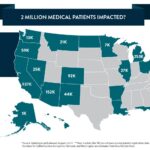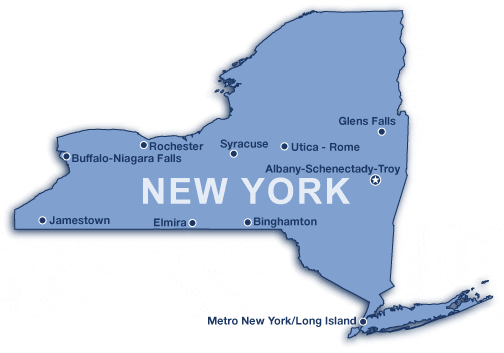Turning Over a New Cannabis Leaf in New York?

2 Million Medical Patients Impacted?
January 21, 2018
Know the Risks: Valuations in the Cannabis Marketplace
January 28, 2018By J.J. McCoy, Senior Managing Editor for New Frontier Data
It has been some time coming for New York’s state of mind to open up to the medical and market potentials for cannabis, but the nation’s third-largest population (and the financial and cultural crucibles within the country’s largest city) now seems poised to participate in earnest.
In his new $168 billion fiscal year 2019 budget plan this month, Cuomo proposed a study to consider the impacts of legalizing cannabis for adult use. More specifically, New York’s Department of Health will examine the effects that legalizing the drug would have on the state’s health, economy, and criminal justice system. It would also analyze the projected impacts which legalized adult-use cannabis would have relating to neighboring states.
Massachusetts legalized cannabis in 2016, Vermont just days ago passed a law to legalize it on July 1, and newly installed New Jersey Gov. Phil Murphy campaigned on legalization, touting its projected net revenue of $300 million for the Garden State.
Though the state first authorized a medical cannabis program through passage of its Compassionate Care Act of 2014, it has taken years for Governor Andrew Cuomo to warm to it, and as recently as February 2017 he publicly opposed adult use by dismissing cannabis as “a gateway drug” while nevertheless acknowledging another side to the debate.
That other side has apparently gotten more persuasive of late: In recent months, state officials and its Department of Health have been working to expand and improve its struggling Medical Marijuana Program by authorizing five additional registered organizations to manufacture and dispense medical cannabis, empowering nurse practitioners and physician assistants to certify patients, and permitting home delivery.
Last November, Cuomo observed Veterans Day by signing legislation to allow medical cannabis for use in the treatment of the newly qualifying conditions post-traumatic stress disorder (PTSD) and chronic pain. The bill gave military veterans, police officers, firefighters, and survivors of domestic violence access to New York’s burgeoning medical cannabis dispensary system.
Such efforts have had a positive impact on patient participation. As of January 23, there were 42,429 patients and 1,426 registered practitioners participating in the program — a 60% increase in patient participation over the last four months. In an additional effort to improve patient access, last month the Department of Health announced new regulations allowing registered organizations (ROs) to manufacture and distribute additional products — including topicals such as ointments, lotions, and patches; solid and semi-solid products including chewable and effervescent tablets, and lozenges; and certain non-smokable forms of ground plant material.
Of course, Cuomo may have also been persuaded by state officials suggesting the potential for legalized markets to help shore up New York’s current $4.4 billion budget deficit. And voters’ opinions doubtless count, too: A poll this month from NBC News and the Wall Street Journal found 60% of Americans being in favor of legalizing cannabis for adult use, up from 55% in 2014.

J.J. McCoy
J.J. McCoy is Senior Managing Editor for New Frontier Data. A former staff writer for The Washington Post, he is a career journalist having covered emerging technologies among industries including aviation, satellites, transportation, law enforcement, the Smart Grid and professional sports. He has reported from the White House, the U.S. Senate, three continents and counting.




